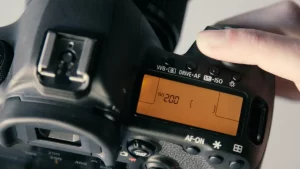A Guide to Digital Cameras- Working Principle and Buying cameras online
Cameras have made their way into the daily lives of human beings nowadays. It is present in our laptops, phones, and even in the tablets used by people. Still, most of us use the cameras with the basic knowledge regarding the Camera. So, if you’re buying a camera, there needs to be a basic understanding of the working principle of the Camera and regarding the buying tips for buying the cameras online as there are a lot of factors which need to be considered when you shop online. Though shopping for the cameras online is easy, you need to be a smart user and choose a reputable brand so you can get the best camera. Let’s see what are the things you must see when you buy a camera.
1. The Key Settings of a Camera
The three things one should acquaint oneself with are the aperture, shutter speed, and ISO. The three fundamental elements work in synchronization, provided one can manipulate and control them. Hence, they’re known as the Exposure Triangle, collectively.
2. The aperture of the Camera

Photo by Sahil Pandita on Unsplash
The aperture of a camera is measured using an f-number scale. The aperture can constrict the light that passes through them using an internal element (called a diaphragm) by most lenses. This can be extended and retracted using controls on the Camera. If there is a requirement of more light, by pulling that diaphragm back as far as it goes, or if the need is less, the extent of the diaphragm and limit the incoming rays to a narrower, focused hole. Thus, therefore, is just a relative measure for the diameter of your lens opening. Lower f-numbers indicate a wider aperture, with f/2.8 and below being the extremes, while higher ones signify more light being blocked. However, there is a list of details regarding the Camera while buying a camera online, where the customer can refer for further knowledge. For lens, you can always trust Nikon telephoto lens.
3. The Shutter speed of the Camera

While buying cameras online, there is a strong necessity to check the lowest level of shutter speed available in the Camera. Shutter speed is that element in the Camera that controls how long the Camera spends collecting light instead of ISO and aperture. It’s measured in fractions of a second, so a shutter speed of 1/125 means the shutter is open for one 125th of a second. The higher the shutter speed, the Camera captures a shorter period, which is key for getting blur-free action shots. On the other hand, lower speeds allow you to soak up lighter, with the risk of blurry results if your Camera and subject aren’t still.
4. The ISO

Photo by ShareGrid on Unsplash
The ISO is the abbreviated form of the International Organization for Standardization. It describes the light sensitivity of the Camera’s sensor, which is set against a common standard. It was originally known as “film speed,” due to the static measure of the amount of light a given type of film could absorb. However, in modern digital cameras, the ISO can be adjusted up and down. Higher ISO means a brighter image, which is achieved by digitally amplifying the information collected during exposure. Unfortunately, it’s an imperfect process that generates errors, which become apparent in your pictures as discoloration and noise that is the unattractive speckling effect you usually see in low-light photos.
5. Autofocus

Every phone and Camera nowadays are trying to dodge the only one problem that is focusing speed. However, the primary solution is more focusing points on your Camera combined with a faster focusing motor for the lens. This needs to be enquired by the user while buying cameras online. The reliability and speed of autofocus, particularly in low light, is how professional cameras stand head and shoulders above the rest. This feature is the sile responsible factor behind new-age dynamic shots.
6. Image Stabilization
According to digital zoom, digital image stabilization (IS) is more of a tool used for marketing than a useful feature. The optical fundamentals are a whole different story. The Lenses with optical IS are equipped with internal elements which move in the opposite direction of any small movements you make. This enables the steadying of the image that arrives onto the sensor. Various effective features like these allow us to shoot at two or three steps slower shutter speed than you are usually and would successfully prevent motion blur.
The basic points regarding the Camera’s functioning that have been said above successfully provide a reference guide to refer to before buying the Camera. The understanding of the functions not only increases the knowledge but also improves photography skills.




